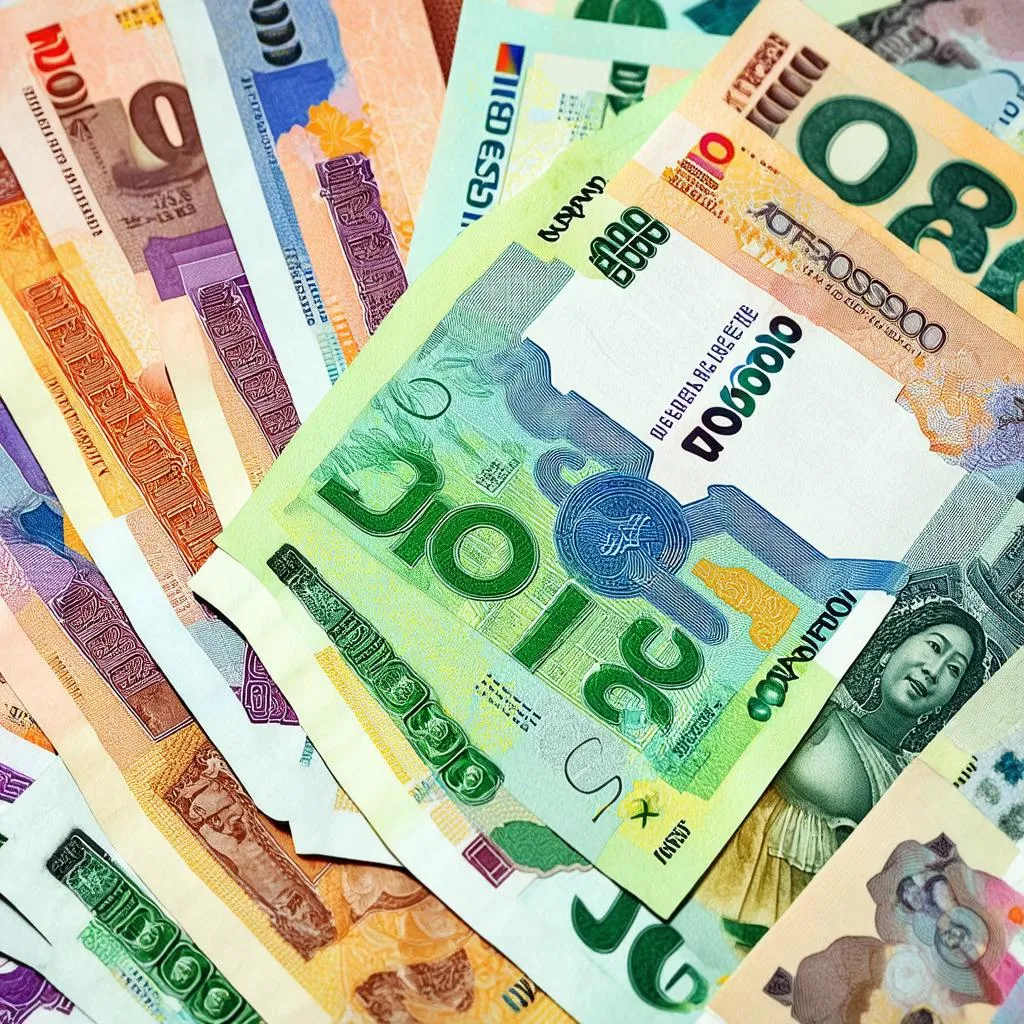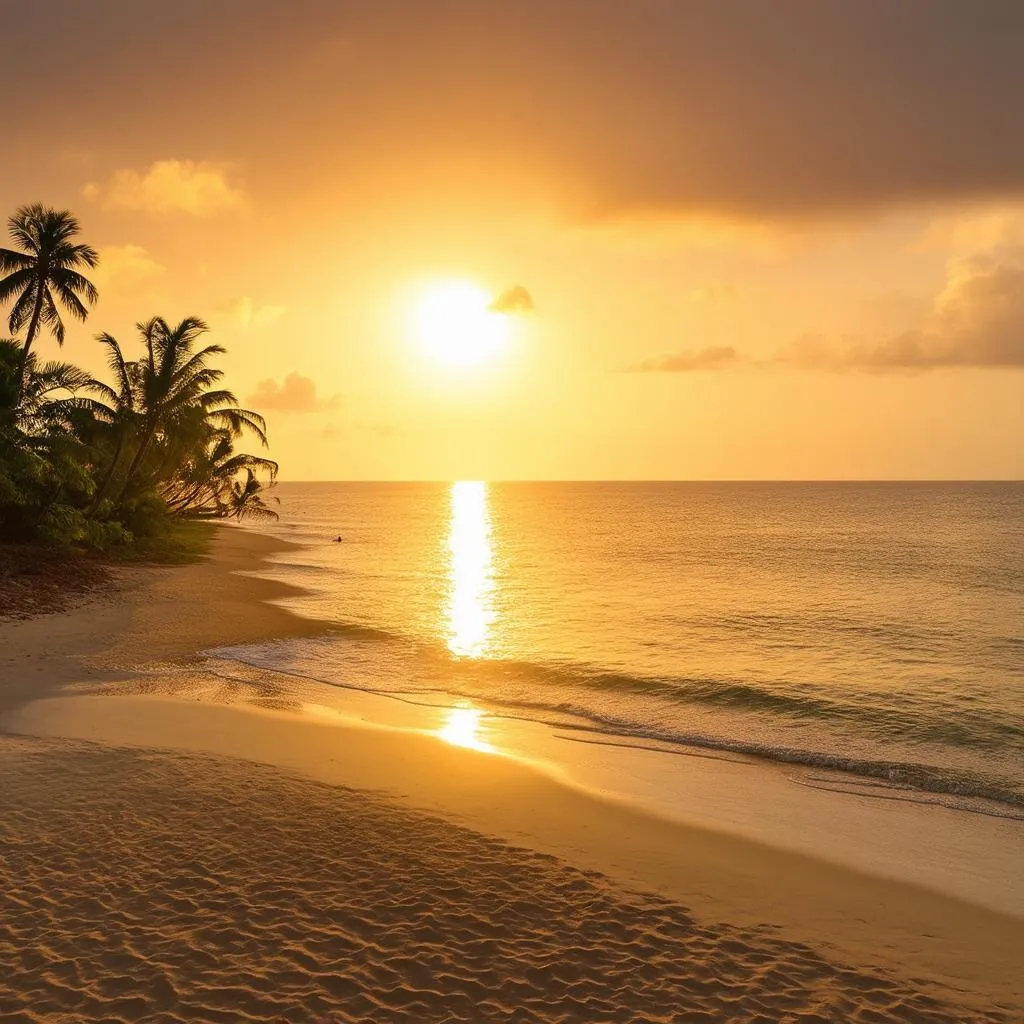“It’s more fun in the Philippines” – a slogan that rings true for many travelers who have experienced the beauty of this Southeast Asian archipelago. But how much fun can you afford? This comprehensive guide breaks down the costs associated with a trip to the Philippines, helping you plan the perfect getaway without breaking the bank.
Unveiling the Costs: From Flights to Souvenirs
The cost of your Philippine adventure depends on your travel style, preferences, and length of stay. Let’s explore the key expenses:
Flights: Gateway to Paradise
Roundtrip flights from the US to the Philippines can range from $800 to $1,500, depending on the season, airline, and how far in advance you book. It’s worth checking flight comparison websites and subscribing to airline newsletters for potential deals.
Accommodation: From Backpacker Havens to Luxurious Retreats
The Philippines offers a diverse range of accommodation options to suit every budget:
- Budget-friendly hostels: Dormitory beds start as low as $10 per night, perfect for solo travelers or those on a shoestring budget.
- Mid-range guesthouses and hotels: Expect to pay $30-$70 per night for comfortable rooms with private bathrooms.
- Luxury resorts and villas: Indulge in five-star amenities and breathtaking views for upwards of $100 per night.
Food and Drinks: A Gastronomic Adventure
Filipino cuisine is a delightful fusion of flavors, and the best part? It’s incredibly affordable!
- Street food: Savor local delicacies like adobo, sisig, and halo-halo for as little as $1-$3 per meal.
- Local restaurants: Enjoy a satisfying meal with drinks for around $5-$10 per person.
- Upscale dining: Expect to pay $20 or more per person for fine dining experiences.
Transportation: Navigating the Islands
- Domestic flights: Budget airlines offer affordable flights between islands, with prices starting at $20 per leg.
- Ferries: A scenic and budget-friendly way to travel between islands, with fares ranging from $5 to $20 depending on the distance and class.
- Jeepneys: These iconic public transportation vehicles offer a unique cultural experience and cost less than $1 per ride.
- Tricycles: These motorized rickshaws are convenient for short distances, with fares ranging from $1 to $5 depending on the distance.
Activities and Entertainment: Island Hopping, Diving, and More!
- Island hopping tours: Explore pristine beaches, hidden lagoons, and vibrant coral reefs for around $20-$50 per person.
- Scuba diving and snorkeling: Discover the underwater wonders of the Philippines for around $30-$50 per dive.
- Historical and cultural sites: Entrance fees to museums, historical landmarks, and cultural villages typically range from $1 to $5.
Sample Daily Budget:
Here’s a rough estimate of daily expenses based on different travel styles:
- Budget Traveler: $30- $50 per day (hostel, street food, local transportation)
- Mid-Range Traveler: $50- $100 per day (comfortable hotels, local restaurants, domestic flights)
- Luxury Traveler: $100+ per day (luxury resorts, fine dining, private transportation)
Planning Your Dream Trip: Tips for Maximizing Your Budget
- Travel during the off-season: Shoulder seasons (May-June and September-October) offer pleasant weather and lower prices.
- Embrace local experiences: Opt for local restaurants, markets, and transportation options for authentic and affordable encounters.
- Book flights and accommodation in advance: Secure the best deals and avoid last-minute price hikes.
- Pack light: Avoid excess baggage fees and travel light with only the essentials.
- Withdraw Philippine Pesos (PHP): Exchange rates are generally better in the Philippines than in your home country.
 Philippine Peso Bills
Philippine Peso Bills
FAQs: Answering Your Burning Questions
Q: Is it safe to travel to the Philippines?
A: The Philippines is generally safe for travelers, but it’s always wise to exercise caution and stay informed about local advisories.
Q: Do I need a visa to visit the Philippines?
A: Most nationalities can enter the Philippines visa-free for up to 30 days. However, it’s essential to check the specific visa requirements for your nationality.
Q: What is the best time to visit the Philippines?
A: The best time to visit the Philippines is during the dry season (November to April) for optimal weather conditions.
 Sunset Over Philippine Beach
Sunset Over Philippine Beach
Conclusion: Embrace the Adventure
The Philippines offers an unforgettable travel experience without breaking the bank. By planning wisely and embracing the local culture, you can create memories that will last a lifetime.
For more travel tips and inspiration, visit TRAVELCAR.edu.vn and discover the wonders of the Philippines!

